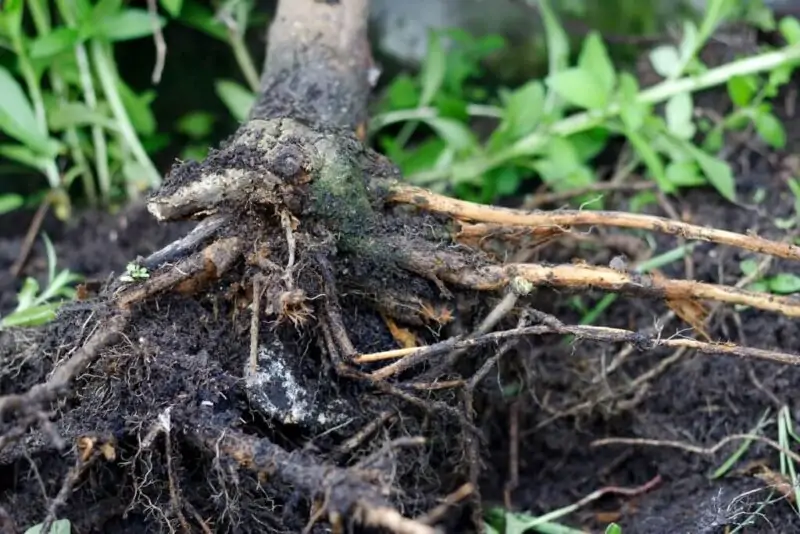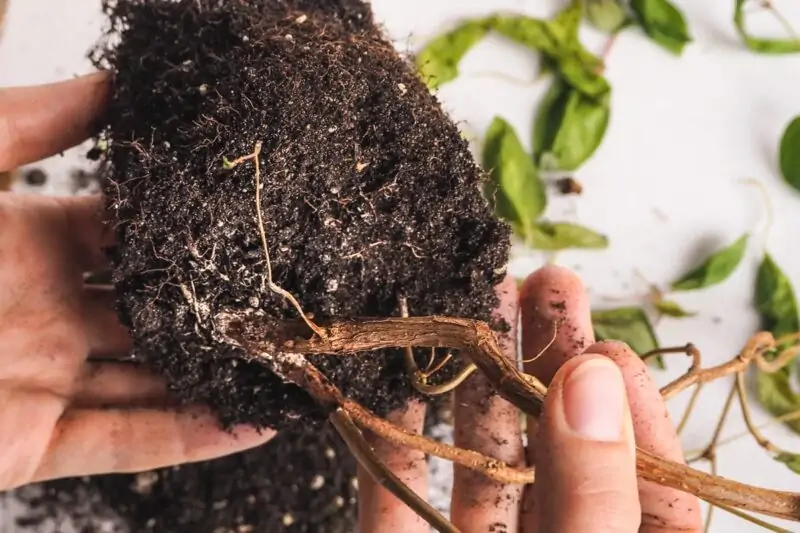How to Identify, Treat, and Prevent Root Rot in Houseplants

If you’re a fan of indoor plants, you’ve likely heard about root rot. It’s a common issue that affects houseplants. It’s crucial to understand how to manage it.
Root rot is a destructive disease in plants. This fungal infection, if untreated, can lead to a slow and painful plant death.
In this article, we’re talking about: what is root rot in plants. We’ll cover what causes it, how to spot its symptoms early, and how to act before things worsen. Also, we’ll discuss how to prevent future outbreaks.
Let’s explore more about root rot in plants!
What Exactly is Root Rot?
Root rot happens when soil fungi attack plant roots. This causes them to decay or die. It’s mainly because the roots are exposed to too much moisture. This excess moisture makes them unable to absorb oxygen. As a result, the roots become susceptible and start to wilt. They lose their ability to hold onto water or nutrients.
Recognizing the Cause Of Root Rot
The fungus infects vulnerable areas such as damaged tissue. This is often due to over-pruning. The fungus leaves spores dormant until conditions favor them again. Once favorable conditions return, the spores can grow and establish another colony. These colonies grow fast, eating away at the healthy tissues of the plant.
Common Houseplant Woe: Root Rot
Indoor houseplants are more prone to developing root rot than outdoor ones. This is because they spend most of their time indoors. Here, environmental factors aren’t as varied. Indoor warmth encourages faster mold growth. A lack of air circulation indoors restricts natural drying processes. As a result, our indoor greens become perfect breeding grounds for harmful microbes, including those that cause root rot.
What Does Root Rot Look Like?
Spotting root rot isn’t always easy. But, there are some signs that your plant may be suffering. The most common symptom is wilting or drooping leaves. This can happen even with proper watering.
Identifying the Signs of Root Rot
To see if a houseplant has root rot, inspect its roots and soil carefully. Here’s what to check:
- Brown mushy roots
- Wilted or yellowing leaves
- Foul odor from the pot
If any of these symptoms are present, your plant might be infected!
Why Is My Plant Wilting?
Wilting often occurs when plants lose too much water. This is usually due to over-watering or poor drainage. Such conditions weaken the structural integrity of the plant. Infections like Erwinia carotovora can also cause wilting. This infection turns plant tissues into a slimy mess, particularly near the base of the stem.

Why Does Root Rot Occur?
Understanding why root rots occur in plants requires knowing how fungi grow. They thrive under certain conditions. When these conditions are met, they can weaken the host plant. There are several reasons why this disease occurs:
Conditions That Cause Root Rots
Several factors can cause fungal growth leading to root rot:
- Overwatering (especially during winter)
- Poor soil drainage
- Lack of proper air circulation
Moreover, some plant species are more susceptible than others. This susceptibility depends on the environment, the type of soil, and the available nutrients.
Understanding The Role Of Overwatering
Overwatering is a major factor causing root rot. Excess moisture in the soil creates anaerobic conditions. These are not conducive to oxygen uptake or natural drying processes. This can lead to decay of the whole root system, making it vulnerable to pathogens like bacteria and fungi.
Can Your Plant Recover from Root Rot?
Indeed, your plant can bounce back from root rot. How well it recovers will depend on the severity of the damage and how quickly you respond.
Fighting Root Rot: A Survival Guide
To rescue a plant struck by this disease, first remove the plant from its pot. Then, prune away the damaged areas until only healthy tissues remain. Once pruned, repot the plant in a new pot with fresh soil. Pay attention to providing enough drainage holes to ensure proper ventilation around the foliage. From here on, water sparingly to avoid overwatering and prevent another bout of fungal growth.
Steps to Revive a Plant with Root Rot
Here’s a step-by-step guide on how to help your houseplant recover from a fungal attack:
- Remove the infected plant from its pot.
- Prune away all dead or mushy tissue.
- Repot into a clean, sterile potting mix.
- Water the plant carefully, ensuring enough air circulates around the roots without creating stagnant conditions that could foster microbial growth.
How To Treat Root Rot In Houseplants?
There are several methods for treating root rot in houseplants. The approach you take will depend on the severity of the infection. Let’s discuss some commonly used techniques to address the problem.
Techniques to Combat Root Rot
One common method involves using fungicides specifically designed to target the pathogens causing the disease. These fungicides can be spread via a watering can and applied directly to the area surrounding the infection. This can also help prevent future outbreaks due to overwatering or insufficient ventilation.
Another approach includes surgical removal of the rotted portions, followed by the repotting process. A new potting medium with beneficial nutrients can aid in restoring the health and vitality of the plant.
In addition, supplements like mycorrhizal inoculants or compost tea can create an environment rich in organisms essential for defense against invading pathogens.
How To Prune Rotting Roots Safely?
When pruning rotting roots, use shears or scissors that have been sanitized with rubbing alcohol. Make sure to remove all visibly damaged and mushy parts, leaving only the healthy tissues.
It’s important to be careful not to damage the remaining healthy roots during this process. This can further weaken your plant’s root system and increase its susceptibility to future pathogen attacks.
Importance of Repotting with Fresh Soil
Repotting is a crucial step when treating root rot in houseplants. Fresh soil offers a new start for your plant, providing the necessary nutrients to stimulate growth and restore its health. Remember to ensure good drainage and avoid overwatering to prevent a resurgence of fungal growth.
Preventing Root Rot: Strategies and Tips
When it comes to diseases like root rot, prevention is always better than a cure. This is especially true for indoor plants as environmental factors can be more variable and less predictable. Here are some strategies and tips to avoid root rot in your plants:
Understand Your Plant’s Water Needs
Different plants require different amounts of water, which can depend on various factors such as their environment, the substrate used for planting, humidity levels, and temperature ranges. Understanding these needs can help you water your plants without causing harm.
Choosing the Right Soil to Prevent Root Rot
Choosing the right soil is another crucial step in preventing root rot. A well-structured soil with a balanced nutrient composition, rich in humus and organic matter, promotes natural drying processes and prevents the domination of certain harmful microorganisms.
Conclusion
Understanding root rot in plants is fundamental to keeping your indoor and outdoor greenery healthy. This common plant disease can pose a significant threat if left unchecked, but early detection and appropriate measures can help your plant recover. Whether it’s recognizing the signs of root rot, treating affected plants, or implementing preventative measures, your vigilance can save your beloved plants. In the end, the goal is to enjoy the beauty and benefits of your indoor or outdoor greenery, providing them with the care they need to thrive.